From Classroom to Coastline: USCB Interns Advance Careers Through Natural Sciences and Community Partnerships
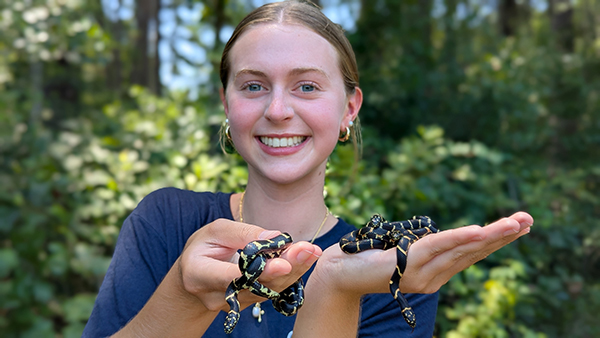
This summer, biology students from the University of South Carolina Beaufort stepped out of the classroom and into the field, joining forces with leading conservation organizations across the Lowcountry.
Through immersive internships at Spring Island Trust, Nemours Wildlife Foundation, Port Royal Sound Foundation, and Brays Island Nature Center, these undergraduates gained hands-on experience in environmental research, wildlife monitoring and community education—while contributing to the region’s ecological stewardship.
“These internships are integral to providing our students with real-world experiences that will further their education and make them stronger candidates for graduate school and employment,” said Dr. Mercer Brugler, chair of USCB’s department of Natural Sciences. “They also benefit the community by deepening our understanding of the Lowcountry’s natural environment.”
Spring Island Trust
Interns Chloe Mullinax and Savannah Polovitz conducted research and mentored youth at Spring Island’s summer camp. Mullinax, a returning intern, focused on water quality monitoring across eight reservoir ponds.
“Seeing how heat index and rainfall affect cyanobacteria and fish populations sparked a passion I didn’t expect,” she said.
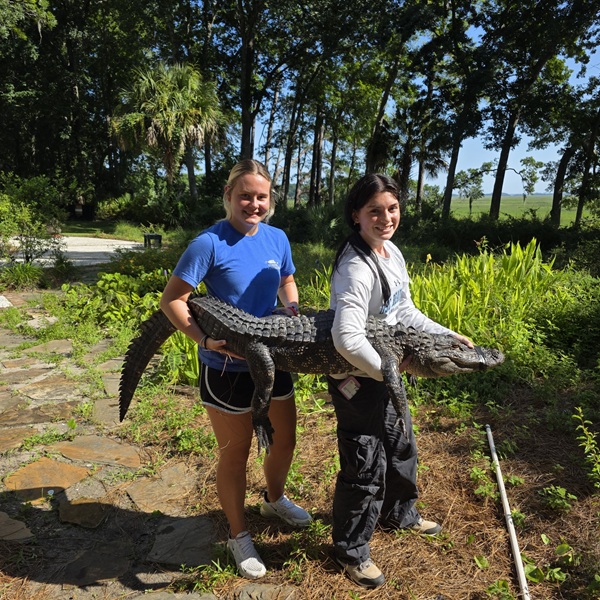
Polovitz, who transferred to USCB for its hands-on marine biology program, worked with Tony Mills on kingsnake research. Mills is Spring Island Trust’s education director and the host of the popular TV show “Coastal Kingdom.” USCB intern Abigail Odom (in the top photo) also worked on this project.
“We’re developing software to match head patterns for recaptured snakes,” Polovitz explained.
Spring Island Trust environmental educator Sloane Wiggers praised the students’ contributions.
“They’re collecting data we might not otherwise gather and getting exposure to every step of the process,” she said.
Nemours Wildlife Foundation
Rising senior Mason Reid explored the intersection of marine and wildlife biology.
“I’ve gained practical skills like radio telemetry and habitat management,” he said. “This internship helped me refine my career interests.”
Reid assisted with pollinator and dung beetle ecological surveys, alligator tagging and quail habitat assessments.
“The research here relies heavily on interns,” he noted.
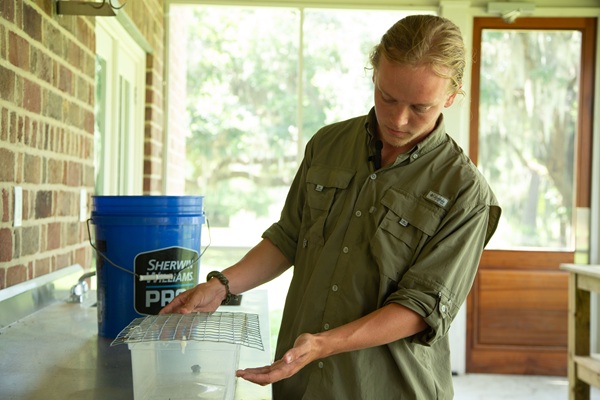
Nemours Wildlife Foundation is a nearly 10,000-acre property in the ACE Basin that serves as a living laboratory.
“Nemours empowers students to engage in conservation work that directly impacts our ecosystems,” Brugler said.
Port Royal Sound Foundation
Intern Matthew Richmond embraced a diverse set of responsibilities—from algae culturing to marsh fieldwork.
“I came to the internship with nothing, and I’m leaving with a fully-finished phytoplankton ID guide, formal training and hands-on experience with marine research equipment,” he said.
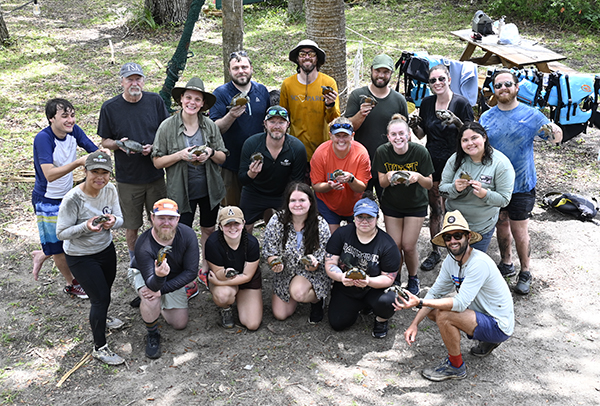
At PRSF, Richmond felt welcomed into a group of like-minded people who shared the goal of protecting local waterways.
He related a moment of unexpected kindness: “One staff member ordered me a gluten-free pizza for her birthday celebration, even though we barely knew each other. That memory made me feel like part of the family.”
USCB students Brendan Cruz. Grant Quartuccio and Madeline Jones also interned at the Port Royal Sound Foundation, working on water quality and environmental education projects.
Brays Island Nature Center
Interns Layla Bowman and Gray Ward conducted water quality testing, installed dissolved oxygen sensors, and monitored local wildlife. Their work included swabbing snakes for fungal disease and collecting samples from the Pocotaligo River.
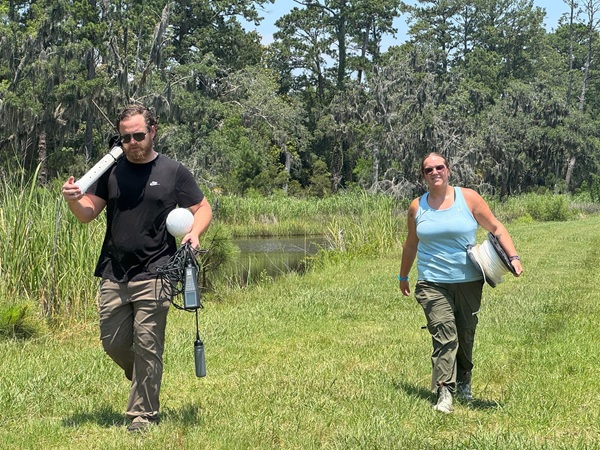
Bowman used a light trap – a device that uses a light source to attract and capture small fish — and Ward measured the depths of impoundments. These tasks combine scientific rigor and outdoor exploration and reflect Brays Island’s founding vision: a residential community in harmony with nature.
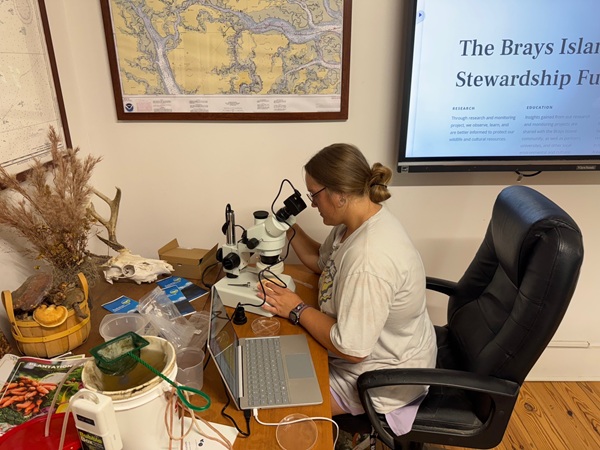
USCB is grateful to the local organizations that employed student interns this summer. On Brays Island and at Nemours Wildlife Foundation, the Heritage Classic Foundation’s generous matching grant program contributed to the interns’ stipends. The students’ pride in earning money for doing what they love is palatable.
With continued support from community partners and local conservation leaders, USCB is cultivating a new generation of scientists whose work will echo far beyond the Lowcountry.
-USCB-
JS/8/8/25